The device is a fire samovar on the wood
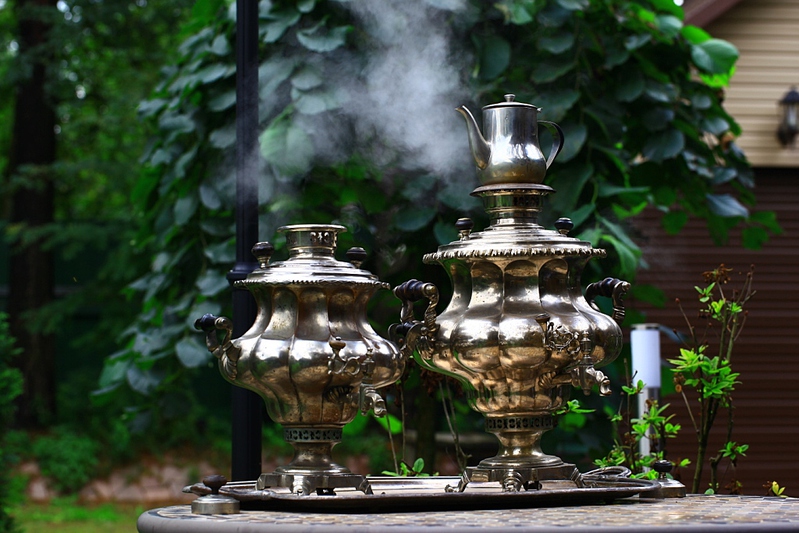
A samovar in Russia is not just a device that boils water. It is a symbol of family leisure, warm gatherings with family, unhurried heart-to-heart conversation. Today it is also a legend from recent antiquity - memories of electric samovars of the 70s, grandmother's curiosities, miraculously preserved in inheritance. And in recent years, part of the style a la Russe, which captured that part of the population, which was little interested in traditions, but valued trends. Looking back under the influence of fashion, they discovered the aesthetics of samovars, hohloma and Pavloposad shawls.
Samovar is a great gift to yourself or a close person, a status person, a foreign guest. The element of home design and the artifact of original Russian history. But in order not just to put it on the table as a souvenir, but to enjoy the main blessing he gives - tea - you need to know how to use it. And this is absolutely impossible without an understanding of what is inside it.
The device is a hot samovar
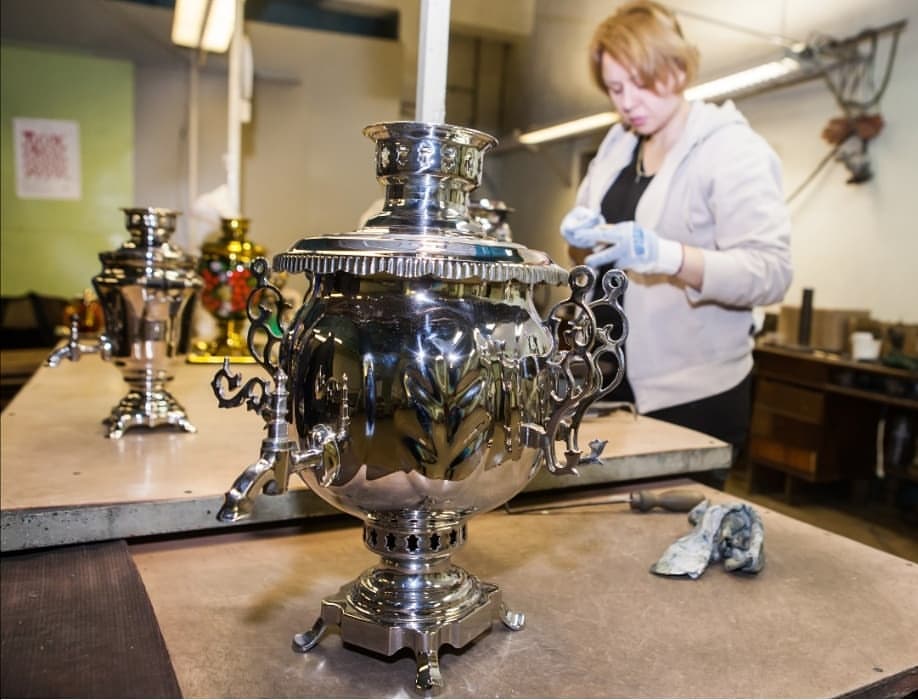
Tula engineers possessed and possess the most developed potential in the country. No wonder that having mastered a high level of skill, they from time to time improved the design of three centuries ago. But in general, flame patterns consist of the following parts.
Top of the structure
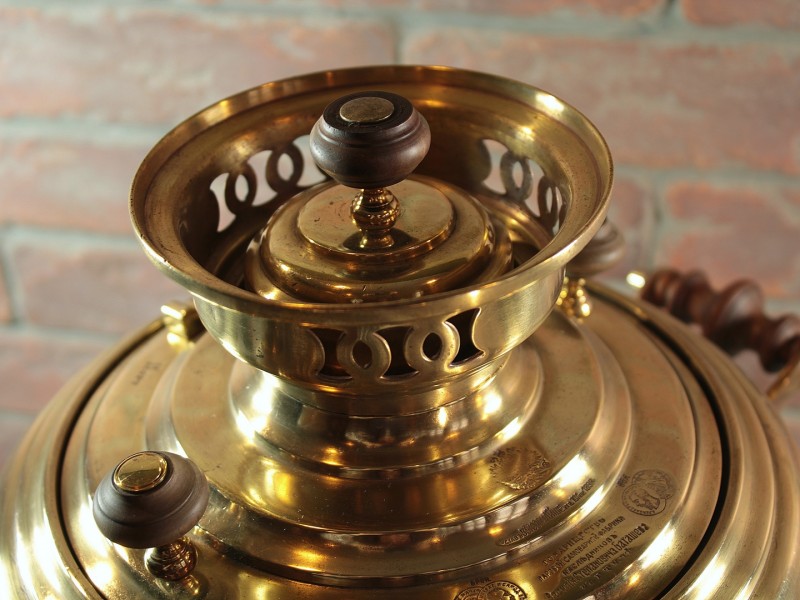
- Hob. The top of the samovar is the groove where the brewer is installed. Tea in it is not subjected to boiling, but insisted in heat. Sometimes, instead of a kettle, the hob was covered with a stew (lid) with holes on the rim. Through them, air thrust was improved, and the design warmed up faster.
- Cover (other names: circle, ring). This is the upper part of the bowl, closing the container with water. At its center there is a round cut-out in the diameter of the flame tube on which it was thrown.
- Dushnik (steam valve, valve). A hole in the lid through which excess steam was released.
- A nipple grip. These are small protruding ears-ears, for which you can remove the cover. So that the hostesses would not burn about the red-hot metal, on top of them they lumped cones of wood.
The middle
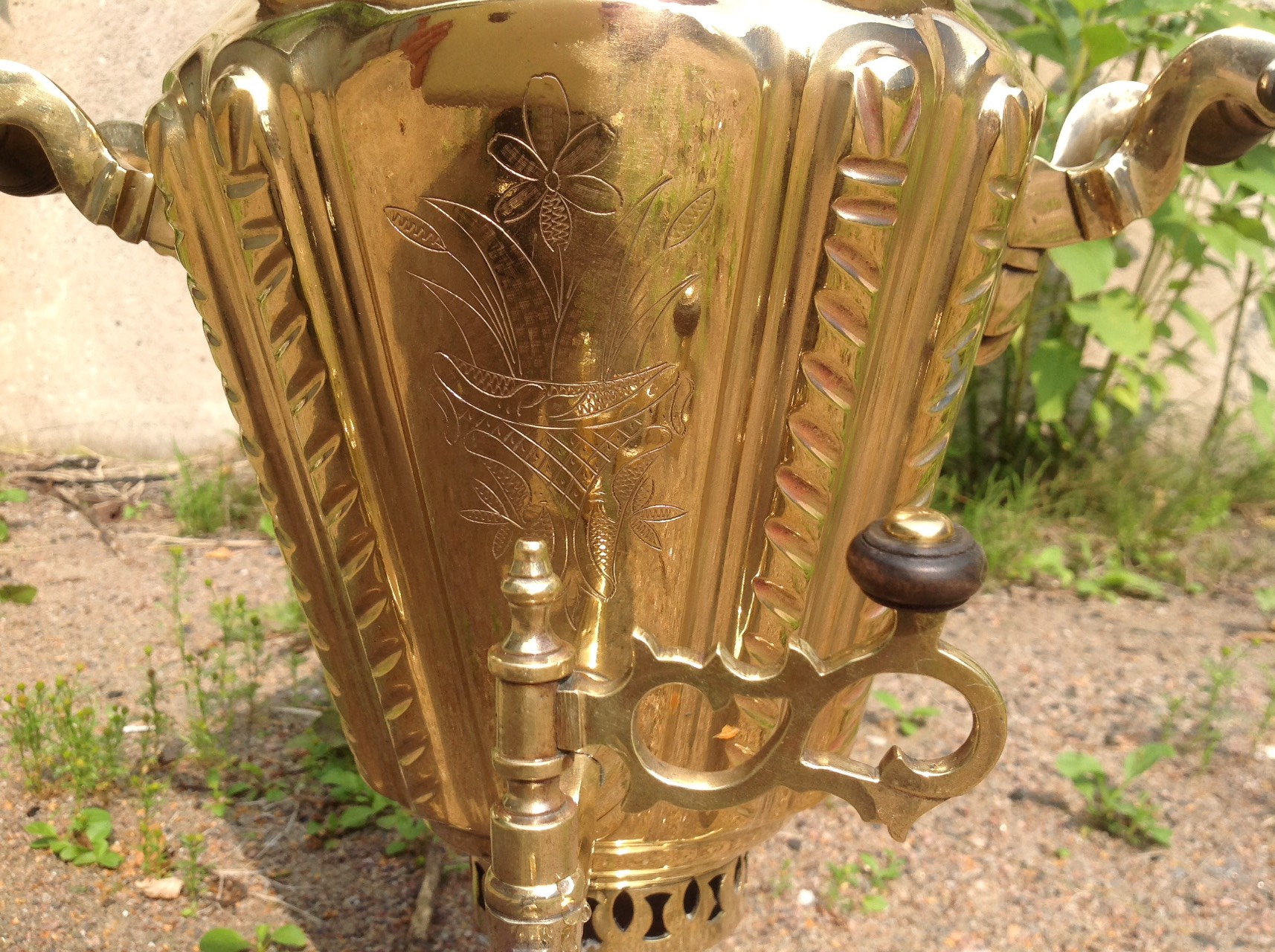
- Body (cylinder, body, wall, bowl). This is the main part of the samovar, where boiling water is poured. In good products it used to be covered with tin, so that there was no contact with the metal, now with food tinning. The samovar differs from the teapot in that it has a large area of internal walls, on which scum settles. As a result, the water becomes softer, and the taste of tea is softer, brighter. The shape of the bowl is different: “glass”, “ball”, “vase”, “acorn”, “bank”, etc. This is an element of external aesthetics that has little effect on the functionality of the samovar. On the sides of the body were handles, for them the samovar was transferred to the table if it was heated in the kitchen.
- Pipe (brazier for coal, jug, pipe-roaster). This is an internal metal bulb-heating element. It passes through the entire bowl, uniformly heating the water in it. Accordingly, the wider the roaster, the faster the boil. Below the pipe communicates with the furnace - a compartment, where the coals are laid and where the grate is located. She receives heat from her and redistributes it higher.
- Crane (crank, cone). Through it boiled water was poured into cups. Interestingly, the location of this element was always above the bottom, so that the sediment, in which there could be impurities, would settle and not get into the drink. The crane was an invention of Russian engineers. Chinese and Roman samovars suggested that they should be used to scoop up some hot water with a special scoop, and this was inconvenient.
- Vetka and turnip. These are parts of the design of the krantik. The branch (spindle) was a locking-turning element - blocking and supplying water. Most often, her grip was florid or figured form, often in the form of a carved key and was part of the decorative design of the samovar. The recipe is an overlay around the body of the samovar according to the diameter of the crane. The original sealing element, prolonging the product life.
Lower part of samovar
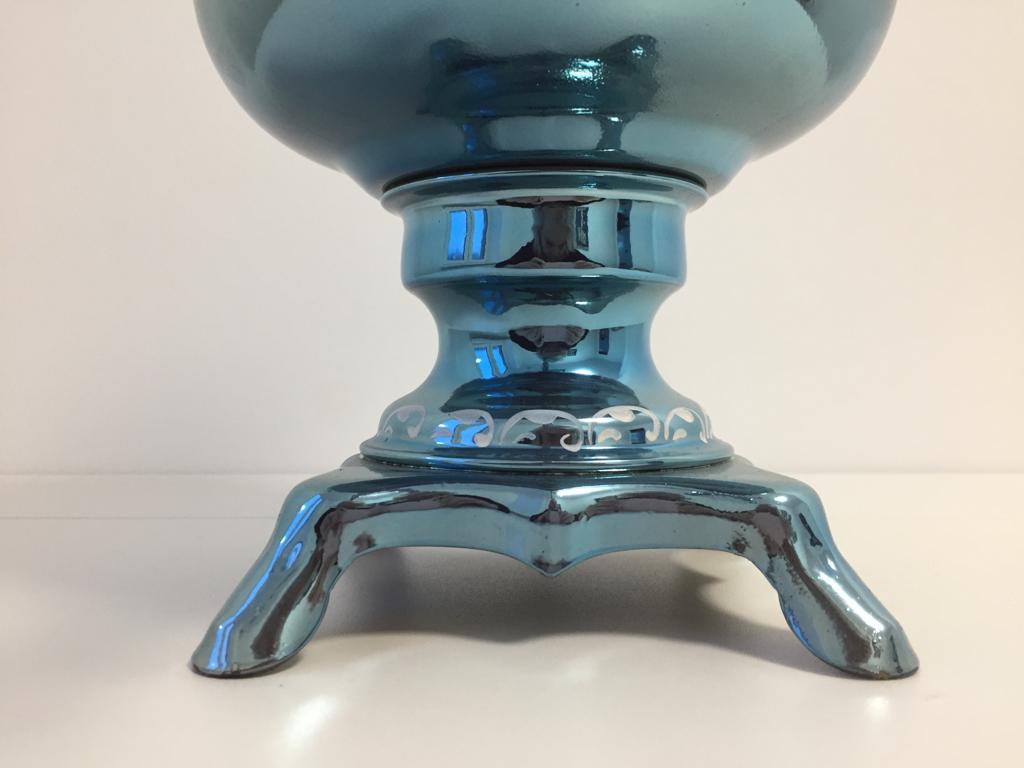
- Neck. It is a contraction, denoting the transition from the body to the base. Outwardly, it resembles the neck under the head, for which it received its name. In its upper part there are openings - “blowers” (or “blowers”) - through which the air necessary for burning goes into the brazier.
- Pallet (base, base). It completes the gradual transition from the neck to the legs and evenly distributes the weight of the samovar so that it does not overturn. For this purpose has a thick cast. Between the pallet and the neck, in many models, there was a bottom - a compartment, where ash, small coals burned. It is not brewed and should be cleaned.
- Feet. They not only hold the balance of the structure, but also raise it above the table so that it does not catch fire from the firebox.
Design features of the flame samovar
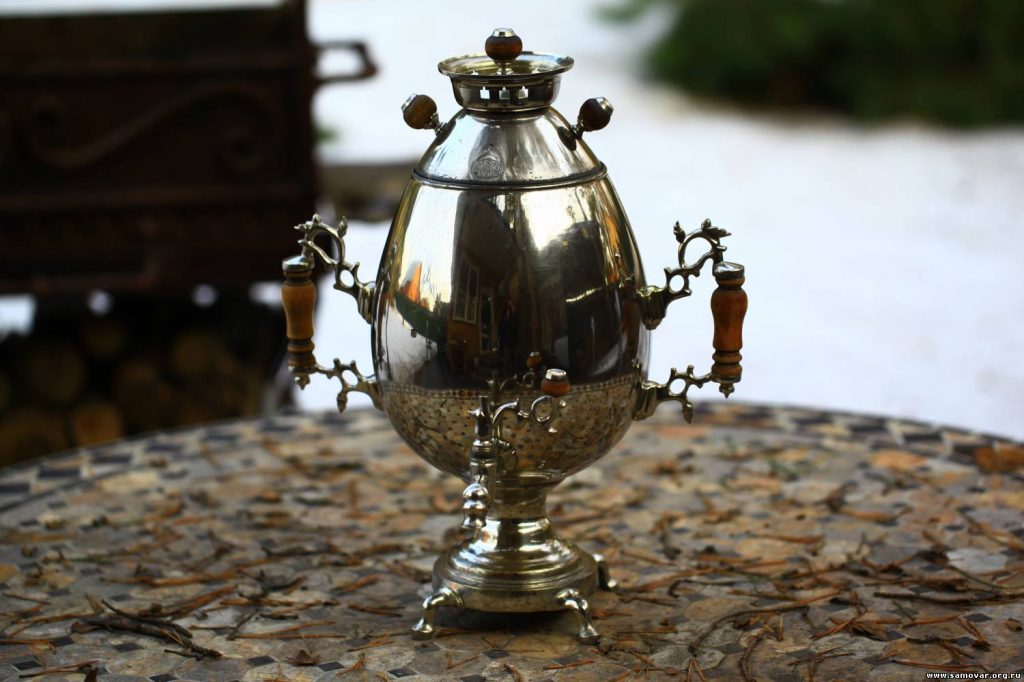
These elements are characteristic of products that are heated with wood, chips, pine cones, coal. But there are also special models, not so common, which use alcohol or kerosene as fuel. In modern production, they are practically not produced - they are only exclusively made to order. Most often, people encounter them in the category of antiques. Such samovars were produced:
- at the Rheingold Teile factory (the first kerosene copy was produced in 1807);
- from the Shemarins brothers and the manufacturer Kapyrzin (models working on alcohol).
In them, as unnecessary, there is no bottom - no ash is formed. Instead of it, as well as the neck and pan, a kerosene burner was installed, which heated the body from below. The body was removable, it could be quickly filled, and the flame level was regulated by a burner screw. These were progressive decisions for that time, and they cost a lot.
***
Thus, inside the samovar construction there is nothing complicated. A little skill and historical artifact will enter the daily life of your home without changing its usual way of life. Electric models are also good, but they do not convey the spirit of true antiquity. Whereas wood or coal products introduce us to a three hundred year history, where families, as now, gathered in the evenings for tea at the merry, crackling and cozy side of the samovar.
